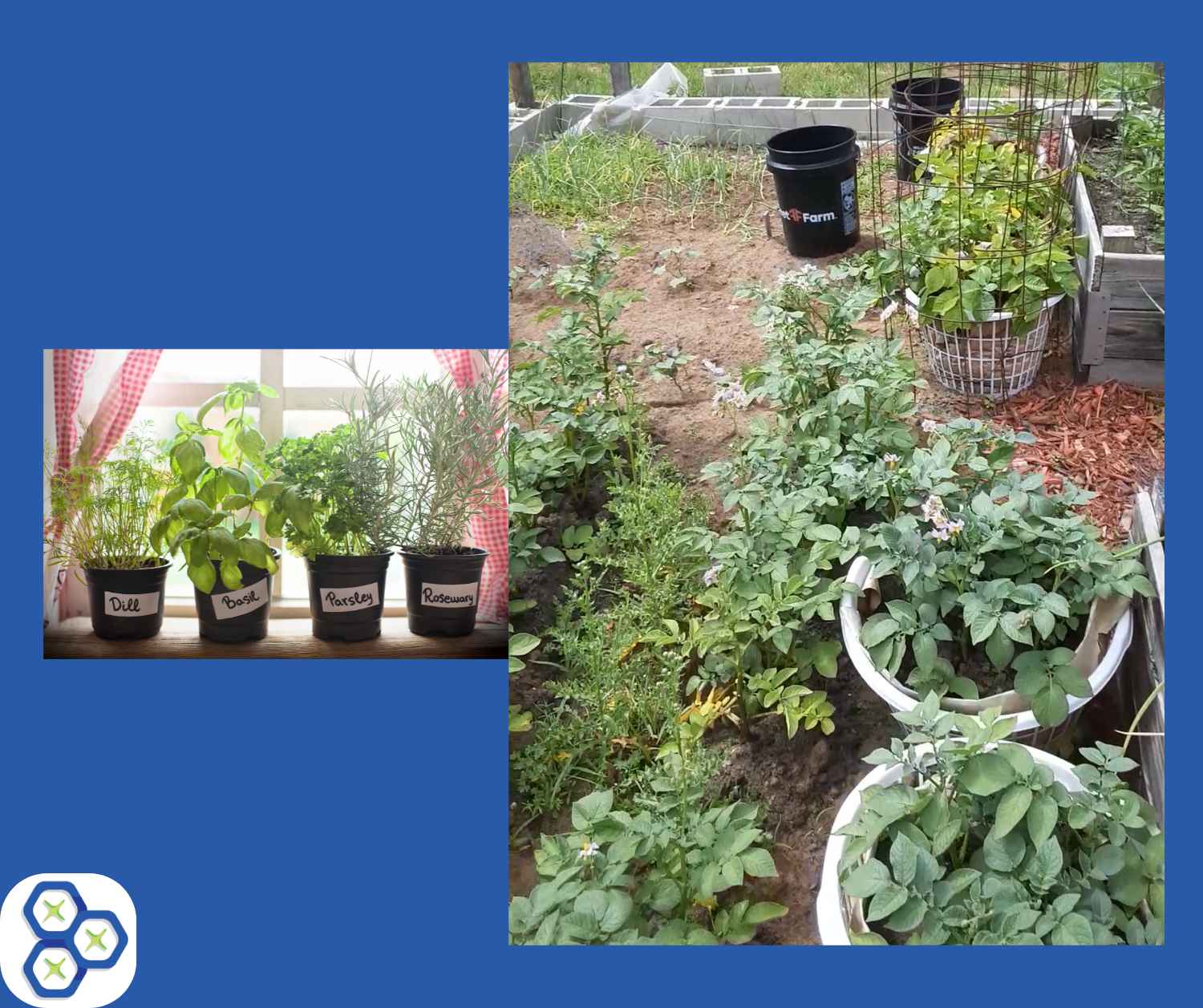Do you grow your own food or have you ever thought about doing it?
Besides cellular nutrition, one of my passions is gardening. I love providing food for my family and knowing we are eating purely nutritious foods. It can be easy even with a short growing season. I’m excited to share the easiest way of gardening with minimal weeding. You won’t believe my potato hack at the end!
Here in Minnesota, we have only 3-4 months of time to grow cold (peas, beans, cabbage, etc.) and hot crops such as tomatoes and peppers. We need advantages such as starting seedlings inside and covering plants when the temps are going to dip below freezing at night to extend growing times.
I’ve found some hacks to growing some root vegetables indoors as well as recycling some of the food you eat to make organic fertilizer as mentioned in the video.
Have you wanted to make a raised bed garden?
My repurposed garden boxes are made of pallets that were once pallets for steel and the posts we are using for fencing (4x4x12) were also a part of the pallets.
To block weeds from growing all around my boxes I used the plastic bags the mulch came in as a barrier instead of tossing them or buying plastic. The cinder blocks to keep rabbits and digging critters out of the bottom and the fence will be the bulk of what I needed to purchase.
By using the boxes I barely need to weed but the dump truck ($300) of black dirt we purchased last year is still giving me the soil to add to the tops of the potatoes.
A few other garden tips I would suggest are:
*Purchase the Vegetable Gardener’s Bible by Edward C. Smith which is packed with information. I use the adversary/friendly page every year to ensure my plants like to be planted by others. Some species will either cross-pollinate or stunt the growth of its neighbor so it’s important to know what should be neighbors. Friends and foes can partner or cause issues for your harvest. It guides you on making a compost pile and which nutrients your plants need according to their “symptoms”.
*Use cardboard as a natural weed barrier that will decompose under dirt over time. It is also a quick way to start a garden area that only needs 3-4 inches of dirt (lettuce) for vegetables with more shallow roots.
*Recycle food scraps into compost or as mentioned in the video use organic fertilizers. Keeping your soil free of chemicals, will ensure a clean food source that won’t make anyone ill now or later.
Let me show you what I’ve done to minimize weeds and grow the most I can in a small space. Enjoy the short tour!
Once you have figured out what you like to plant to eat, it’s time to preserve your bounty!
You can water bath can, dry can, pressure cook, dehydrate, or even freeze-dry your foods for long-term storage. There are SO many great videos on YouTube to walk you through the process for each type of food.
When you have these foods on hand you will then want to supplement your micronutrients. Using a Hair Mineral Analysis can show you what you are lacking to fill in the dietary gaps.
If you are ready for some serious nutrition, LET’S CHAT about your health goals!
Copyright Scientific Nutrition, LLC 2022




